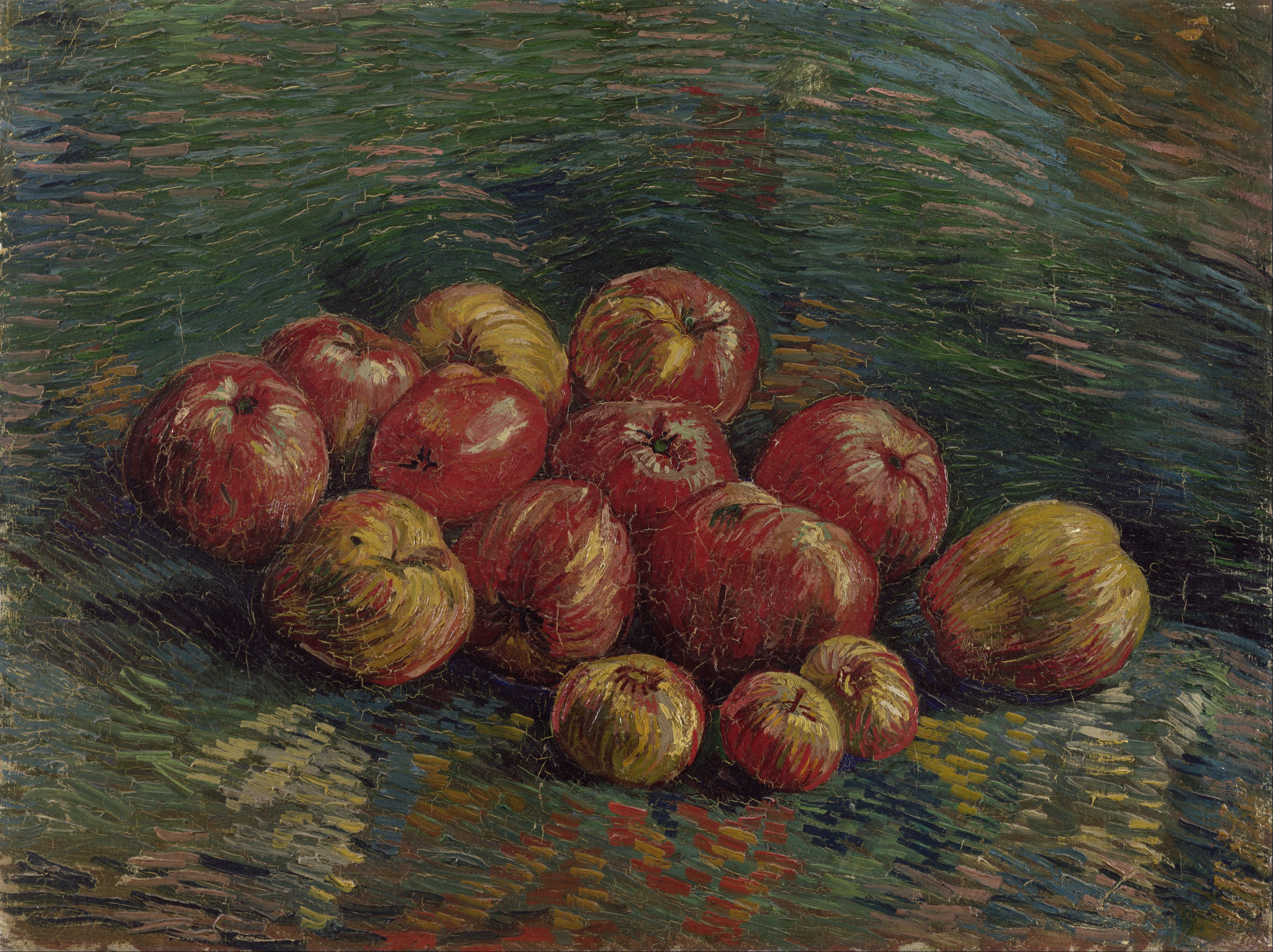October
Oklahoma Fruit of the Month: Apple

Of all the tree fruit crops, apples and peaches are best adapted to Oklahoma conditions. Apples bloom later and are less susceptible to the spring frosts that are common in our state. Oklahoma apples are also susceptible to damage from insects and fungus, so they aren't always the perfect apples you might be accustomed to seeing in the grocery store. However, they are great for making applesauce and pies or for drying.
Play With Your Food: Apples
Enzymes cause chemical reactions. As apples react with oxygen in the air, a chemical reaction changes the starch to sugar, turning the apple brown. Divide students into groups of four or five. Give each group seven apple pieces. Students will use the Scientific Method Format to conduct the following experiments on the apple pieces.
- Leave one piece of apple uncovered at room temperature.
- Leave one piece of apple covered on a plate.
- Place one piece of apple in a refrigerator.
- Place one piece of apple in a freezer for an hour, then remove it and leave it at room temperature.
- Boil an apple for five minutes, then remove it and leave it at room temperature.
- Dip an apple in vinegar, and then leave at room temperature.
- Dip an apple in lemon juice, and then leave at room temperature.
On a graph, record what happens after 10 minutes, 30 minutes, one hour, three hours, six hours and 24 hours.
Extra: Try this experiment with other fruits and veggies, e.g., eggplant, carrot, banana, potato, etc.
Be a Food Explorer: Apple
- Bring assorted varieties of apples to class and have a tasting contest.
- Place apple slices on thick whole grain crackers and top them with cheese slices. Heat them on a baking sheet in a 400 degree oven.
- Spread peanut butter or cream cheese on apple slices
Save Our Soil: Exploring Agricultural Land Use
Students will learn about the distribution of agricultural land through a demonstration with an apple representing the earth. Students will discuss the impacts of land development. Students will make land use decisions for a variety of situations and justify their decisions. Students will answer questions from a chart showing land use and ecosystem types in select countries from different regions.
Apple (1 medium)
amounts per serving
% daily value
calories
80
calories from fat
0
total fat
0g
0%
sodium
0g
0%
total carbohydrate
22g
7%
dietary fiber
5g
0%
sugars
16g
protein
0g
Vitamin A
2%
Vitamin C
8%
calcium
0%
iron
2%
Percent daily values are based on a 2,000 calorie diet.
Books
Codell, Esmé Raji, and Lynne Rae Perkins, The Legend and Legacy of John "Appleseed" Chapman, HarperCollins, 2012. (Grades PreK-2)
The story of Johnny Appleseed — pioneer, reader, vegetarian, spiritualist, businessman, friend of American Indians and tamer of wolves. He planted apple seeds, too.
Lipton, Eden Ross, and Mordicai Gerstein, Applesauce Season, Roaring Brook, 2009.
Three generations of urban homebodies and apple lovers take part in a seasonal rite that leads form farmer's market to stove top to dining room table.
McClure, Nikki, Apple, Abrams Appleseed, 2012. (Grades PreK-1)
Block cutouts travel backward from ripe fruit to planted seed. The text is one-word-per-page minimal.
Richards, Jean, A Fruit is a Suitcase for Seeds, Millbrook, 2003. (Preschool)
Introduction to seeds, their purpose and growth.
Stone, Lynn, Fruit (Plant Parts), Rourke, 2007. (Grades PreK-2)
Beautifully photographed book about fruit is basic but accurate. It is an excellent resource for teaching pollination and seed development and the difference between a fruit and a vegetable.
Wellington, Monica, Apple Farmer Annie, Dutton, 2001.
Annie, the apple farmer, saves her most beautiful apples to sell fresh at the farmer's market in the city. She picks plenty of sweet, crunchy apples and makes applesauce, apple cider and baked apple treats.


